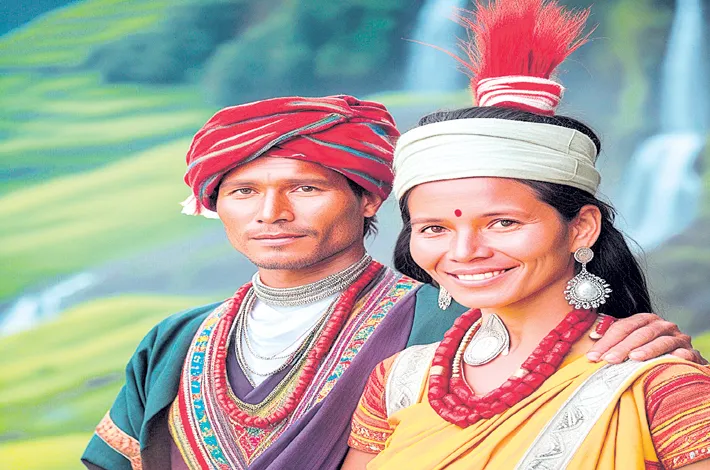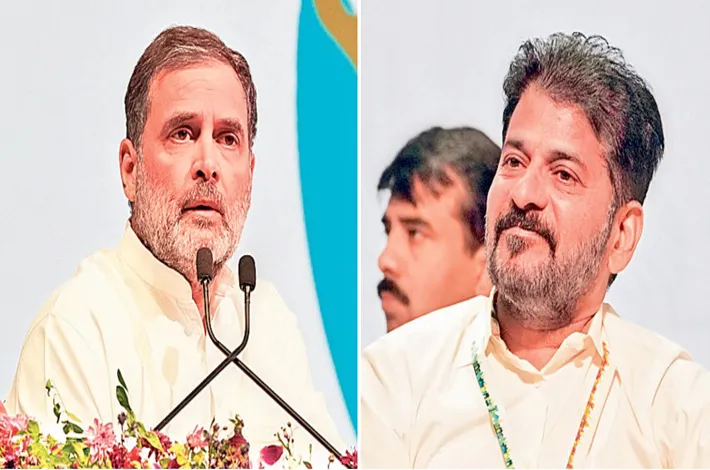The Matrilineal Marriage System of the Khasi Tribe in Northeast India
27-04-2025 12:00:00 AM

There are two primary forms of Khasi marriage: Ka Pynhior Synjat, involving the exchange of rings, and Ka Lamdoh, a simpler ceremony without rings. Both are civil contracts rather than religious sacraments, emphasizing mutual consent and family involvement
Nestled in the lush hills of Meghalaya, the Khasi tribe, one of the prominent indigenous communities of Northeast India, is renowned for its unique matrilineal society, which profoundly shapes its marriage system. Unlike the predominant patriarchal norms across much of India, the Khasi people follow a system where descent, inheritance, and family lineage are traced through the mother.
This matrilineal framework, one of the few remaining in the world, offers a fascinating glimpse into a culture where women hold significant authority in family and social structures, particularly in marriage practices. This article explores the Khasi marriage system, its traditions, rituals, and the socio-cultural dynamics that make it distinctive.
Matrilineal Foundations of Khasi Society
The Khasi tribe, constituting about 48% of Meghalaya’s population and predominantly residing in the Khasi Hills, belongs to the Austroasiatic linguistic group, with historical ties to Southeast Asian cultures. Their matrilineal system is rooted in historical necessity: Khasi men, often engaged in warfare or trade, left women to manage households and property, fostering a system where women became custodians of lineage and wealth.
This tradition is reflected in the concept of Ka Tipkur ka Tipkha, which emphasizes respect for maternal and paternal kinship. The clan (Kur), descended from a common ancestral mother, forms the core of Khasi social structure, and marriage practices are designed to preserve this matrilineal identity.
In Khasi society, the youngest daughter, known as Ka Khadduh, inherits ancestral property and is responsible for caring for her parents and maintaining the family home. This inheritance pattern influences marriage arrangements, as the husband of Ka Khadduh typically moves into his wife’s ancestral home, a practice known as matrilocal residence. For non-heiress daughters, couples may establish a new household (neolocal residence), but the maternal lineage remains paramount. Children take their mother’s clan name, ensuring the continuity of the Kur.
Marriage Practices and Rituals
Khasi marriages are predominantly monogamous, reflecting a social structure that discourages polygamy. The system allows considerable freedom in partner selection, with young men and women permitted to socialize and choose their mates. Premarital relationships are generally accepted, provided they adhere to clan exogamy rules. Marriage within the same clan is strictly taboo, considered incestuous, and can lead to ex-communication or exclusion from family rituals, such as the mixing of bones in the clan ossuary after cremation.
There are two primary forms of Khasi marriage: Ka Pynhior Synjat, involving the exchange of rings, and Ka Lamdoh, a simpler ceremony without rings. Both are civil contracts rather than religious sacraments, emphasizing mutual consent and family involvement. The marriage process begins with a formal betrothal, where the groom’s family approaches the bride’s family to seek approval. If accepted, preparations for the wedding commence, typically held at the bride’s home, underscoring the matrilineal emphasis on the woman’s household.
On the wedding day, the groom, accompanied by his male kin, including a maternal uncle (U Kni), travels to the bride’s residence. Notably, the groom’s mother and female relatives are traditionally excluded from the procession, highlighting the male role in formalizing the union. The ceremony involves a dialogue between negotiators (Ki Kseangs) from both sides, who recite traditional verses to introduce the groom and affirm his commitment to his wife through all circumstances. Betel nuts (Kwai) are exchanged as a gesture of hospitality, and in Ka Pynhior Synjat, rings are exchanged to seal the union. The ceremony concludes with a declaration of marriage, often followed by a feast.
Divorce and Post-Marital Dynamics
Divorce among the Khasis is relatively common and socially accepted, with causes ranging from incompatibility to infertility. The traditional divorce ritual is simple: the husband hands five cowries or coins to the wife, who returns them with five of her own, and these are discarded by a village elder, symbolizing the dissolution of the union. In modern times, divorces are processed through the Indian legal system, but the cultural acceptance of separation reflects the Khasi emphasis on individual agency within marriage.
Post-marital residence depends on the wife’s status. If she is Ka Khadduh, the couple resides in her ancestral home, where the husband integrates into her family. If not, they may establish a separate household. In cases where a Ka Khadduh dies without children, the widower often returns to his maternal home, underscoring the temporary nature of his integration into his wife’s clan.
Cultural and Modern Influences
The Khasi marriage system is deeply intertwined with their cultural heritage, including their traditional religion, Ka Niam Khasi, which venerates a Supreme Being (U Blei Nongthaw) and nature deities. However, since the 19th century, Christianity, particularly Presbyterianism and Catholicism, has become dominant, with over 83% of Khasis identifying as Christian. Christian weddings often incorporate civil contracts and church ceremonies, but many traditional elements, such as betel nut exchanges, persist.
Modernization and urbanization pose challenges to the matrilineal system. The rise of nuclear families and exposure to patriarchal norms have led some Khasi men to question their roles, with groups like Syngkong Rympei Thymmai advocating for equal inheritance rights. Additionally, the increasing prevalence of single-mother households, as men are not traditionally obliged to provide for children post-separation, highlights tensions between tradition and contemporary realities. Yet, the Khasi matrilineal system remains resilient, supported by community pride and legal recognition under the Khasi Hills Autonomous District Council.
Conclusion
The Khasi marriage system is a testament to the enduring strength of matrilineal traditions in a rapidly changing world. By prioritizing women’s roles in lineage, inheritance, and family life, the Khasis offer a counterpoint to patriarchal norms, fostering a society where gender roles are uniquely balanced.
While modern influences challenge these traditions, the Khasi people’s commitment to their cultural heritage ensures that their marriage practices remain a vibrant expression of identity and community. Through rituals, kinship rules, and social structures, the Khasi marriage system continues to weave together the threads of tradition, autonomy, and resilience in the heart of Meghalaya.








